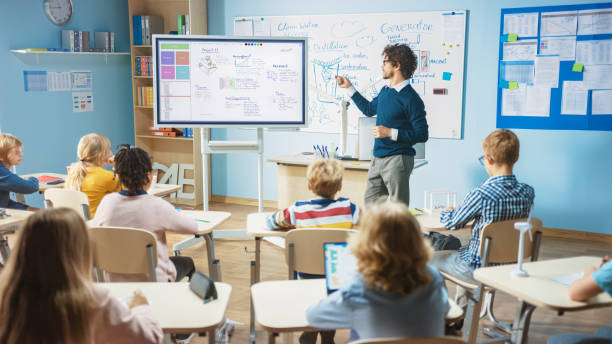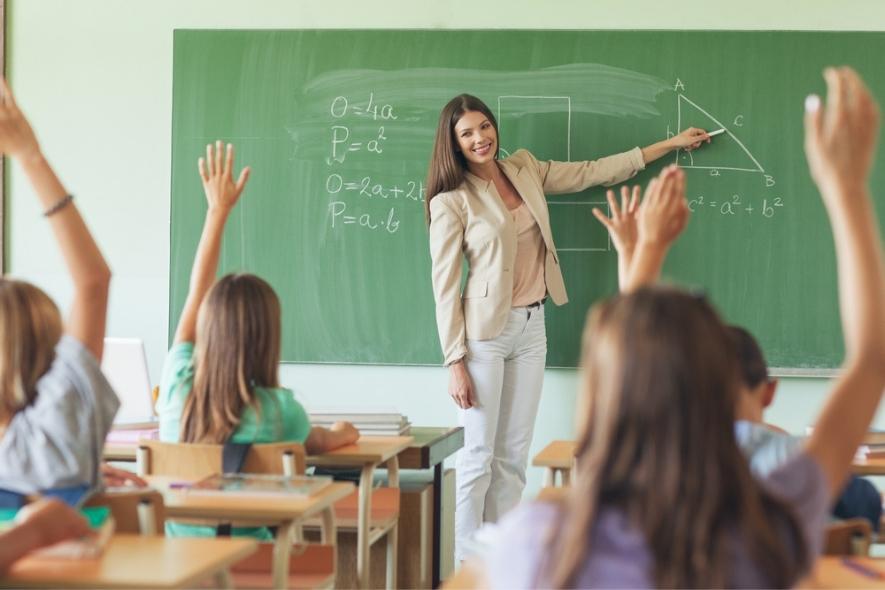Primary Science Tuition Singapore for Building Confidence in Science
Primary Science Tuition Singapore for Building Confidence in Science
Blog Article
Discovering the Different Teaching Strategies in Main Science Education And Learning Today
The landscape of primary scientific research education and learning is progressing, with different training approaches obtaining prominence in modern class. Inquiry-based learning, hands-on experiments, and the integration of modern technology are redefining exactly how teachers engage young minds. In addition, collective strategies and separated guideline are being used to accommodate the diverse requirements of trainees, boosting both engagement and understanding. As we analyze these methodologies, questions occur regarding their performance and the implications for future instructional practices. What might these changes in approach mean for the next generation of learners?
Inquiry-Based Understanding
Inquiry-Based Learning (IBL) is an instructional method that urges trainees to explore scientific ideas through wondering about, investigation, and hands-on experimentation. This technique emphasizes the role of pupils as energetic individuals in their understanding, promoting vital reasoning and problem-solving skills. By engaging with real-world concerns, pupils become inspired and curious, which boosts their understanding of scientific concepts.
In IBL, educators act as facilitators, leading pupils as they navigate their questions instead of delivering details directly. This student-centered approach permits for differentiation, suiting various learning paces and styles. Students create abilities in formulating hypotheses, designing experiments, and examining data, which are crucial for scientific proficiency.
Additionally, IBL promotes partnership among students, encouraging them to share concepts and findings. This cumulative query promotes social skills and a feeling of area within the classroom. Furthermore, the procedure of inquiry urges durability, as pupils learn to welcome failure as a tipping rock towards understanding.
Hands-On Experiments
Hands-on experiments are a crucial part of effective science education and learning, complementing the principles of inquiry-based discovering. These experiments permit students to involve directly with scientific principles, cultivating a deeper understanding with experiential understanding. By manipulating products and observing results, young students can understand abstract concepts in tangible methods.
Such tasks promote crucial reasoning and analytical abilities, as students hypothesize results, conduct experiments, and assess results. This process urges them to ask concerns, refine their understanding, and create a clinical state of mind. Furthermore, hands-on experiments can be customized to varied learning designs, making certain that all students have the chance to engage meaningfully with the web content.
Furthermore, hands-on experiments often urge cooperation among peers, promoting teamwork and communication abilities. Working in teams enables pupils to share ideas, talk about findings, and pick up from one an additional, which improves their general educational experience.
Including hands-on experiments right into the main science curriculum not just enhances the learning environment but additionally grows a long-lasting interest in science. By actively taking part in their education, students are more probable to create an interest for scientific inquiry that extends beyond the classroom.

Modern Technology Assimilation
Incorporating innovation right into primary science education has ended up being progressively essential in promoting trainee involvement and enhancing finding out outcomes. The use of digital tools, such as interactive simulations, digital labs, and instructional software, offers trainees with possibilities to explore clinical principles in innovative methods. These sources facilitate a much deeper understanding of intricate topics by permitting learners to envision and manipulate variables that would be impractical in a conventional classroom setup.
In addition, technology combination motivates personalized learning experiences. Trainees can progress at their own speed, taking another look at tough concepts via multimedia sources, which deal with different discovering styles. This flexibility not just supports individual development however also cultivates a feeling of freedom in students.
Furthermore, technology acts as a bridge to real-world scientific research, linking students with current study and professional contributions. Accessibility to on the internet databases and scientific journals widens trainees' perspectives on clinical query and fosters critical assuming skills.
Collaborative Knowing
Collaborative learning plays a crucial function in primary science education and learning by cultivating synergy and interaction skills amongst pupils. This technique motivates students to interact, share knowledge, and engage in problem-solving, which improves their understanding of clinical ideas. By taking part in group activities, pupils learn to express their concepts, pay attention to diverse viewpoints, and negotiate services, every one of which are important abilities in both academic and real-world contexts.

Research suggests that collaborative knowing can bring about enhanced inspiration and engagement in science topics, as trainees locate enjoyment in shared experiences (primary science tuition Singapore). In addition, this approach prepares trainees for future joint endeavors, furnishing them with the abilities necessary for efficient synergy in higher education and learning and professional atmospheres. Eventually, welcoming collaborative discovering in primary science education can dramatically enhance the understanding experience and promote a deeper understanding of scientific inquiry
Separated Instruction

Set apart direction can show up in various methods, such as differing the content, processes, or items of knowing. For example, teachers may try this out make use of tiered assignments that supply differing levels of complexity, enabling pupils to work at their corresponding readiness levels. In addition, flexible grouping methods can promote collaboration among pupils with various abilities, fostering peer learning.
Evaluation plays an essential role in this method, as it educates instruction and assists teachers comprehend each trainee's unique needs. Developmental assessments, such as monitorings and quizzes, can assist instructors in changing their techniques to enhance finding out end results. primary science tuition Singapore. Eventually, by implementing differentiated direction in primary scientific research education and learning, educators can grow a much more equitable and effective understanding setting, encouraging all trainees to reach their full potential in understanding clinical sensations
Final Thought
In summary, the varied mentor methods in primary scientific research education and learning, including inquiry-based knowing, hands-on experiments, technology integration, joint understanding, and set apart guideline, collectively add to a more reliable knowing environment. These approaches advertise important thinking, analytic abilities, and a deeper comprehension of clinical concepts. By applying these methods, educators can develop helpful and engaging class that address the diverse requirements of pupils, inevitably cultivating a lifelong passion in science and boosting scholastic achievement.
Inquiry-Based Understanding (IBL) is an instructional approach that motivates pupils to check out clinical concepts with wondering about, investigation, and hands-on trial and error.Collaborative discovering plays a vital function in key scientific research education by cultivating teamwork and communication abilities amongst students.Research study shows that collaborative knowing can lead to raised motivation and interaction in scientific research topics, More about the author as students locate enjoyment in common experiences.In cultivating an inclusive knowing setting, distinguished direction emerges as a vital approach to suit the diverse needs and capacities of students in primary science education. Eventually, by applying differentiated instruction in main scientific research education and learning, instructors can grow an extra efficient and fair understanding setting, empowering all students to reach their full potential in comprehending scientific phenomena.
Report this page